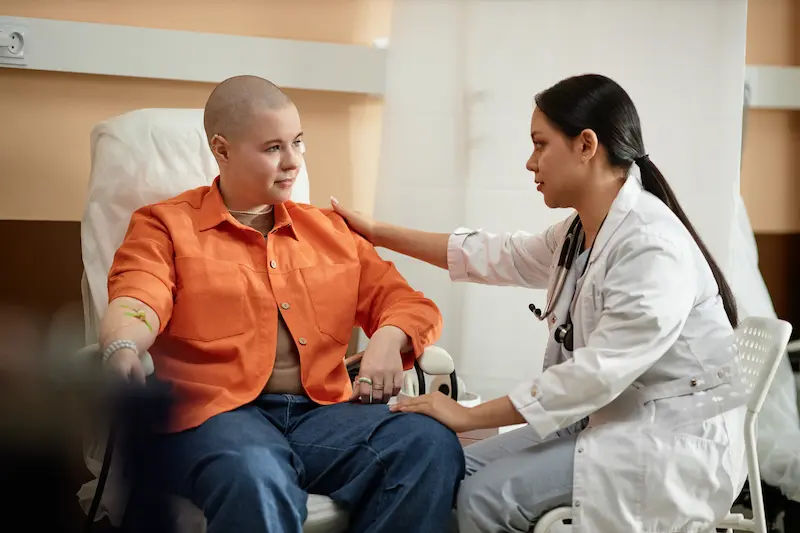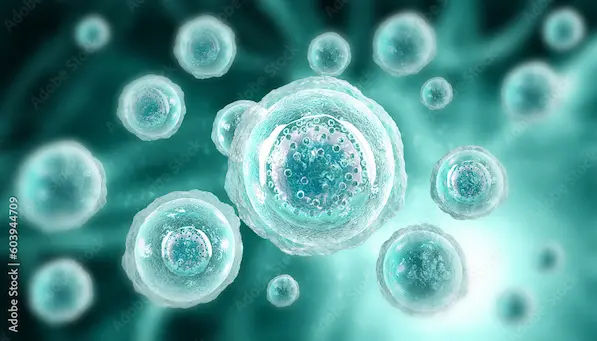Guide to Bone Marrow Transplant New
Learn everything about bone marrow transplants, including the procedure, recovery process, and what to expect for long-term outlook and care.


Introduction
A bone marrow transplant (BMT) can sound like a daunting medical procedure, and it is undoubtedly a complex journey. However, for thousands of patients facing life-threatening diseases like leukaemia, lymphoma, or aplastic anaemia, it represents a powerful beacon of hope for a potential cure. This guide is designed to demystify the entire process, from understanding the basic biology to navigating life after the transplant. Think of it as your roadmap, offering clear explanations and setting realistic expectations for patients and their loved ones. We will walk you through the different types of transplants, what the procedure entails, the critical recovery phase, and the factors that contribute to a successful outcome. Our goal is to empower you with knowledge, helping you feel more prepared and informed as you or your loved one embarks on this challenging but potentially life-saving path.
What is a Bone Marrow Transplant?
At its core, a bone marrow transplant is a procedure to replace damaged or destroyed bone marrow with healthy blood-forming cells. It's not a surgery in the traditional sense of cutting and stitching an organ. Instead, it's more akin to a blood transfusion, where healthy stem cells are infused into the patient's bloodstream to find their way to the bone marrow and begin rebuilding a healthy blood and immune system.
The Role of Bone Marrow and Stem Cells
Bone marrow is the soft, spongy tissue found inside your large bones, such as the hip and thigh bones. It’s the factory where your body produces hematopoietic stem cells. These are "master" cells with an incredible ability: they can develop into all the different types of blood cells your body needs to survive. This includes:
- Red blood cells: Carry oxygen throughout the body.
- White blood cells: Fight infections.
- Platelets: Control bleeding by helping blood to clot.
When this factory is damaged by disease, high-dose chemotherapy, or radiation, it can no longer produce these vital cells. A stem cell transplantation is the process of restarting this factory with a new, healthy workforce.
Why is a Transplant Necessary?
A transplant becomes necessary when the bone marrow is failing or has been intentionally destroyed to treat cancer. The primary goals are:
- To Rescue the Body after high-dose, intensive chemotherapy or radiation therapy that has wiped out both cancer cells
and healthy marrow. - To Replace Diseased Bone Marrow with healthy, functioning marrow that can produce normal blood cells.
- To Provide a New Immune System that can recognise and attack any remaining cancer cells, an effect known as the "graft-versus-tumor" effect.
Consult a Haemato Oncologist for the best advice
Who is a Candidate for a Bone Marrow Transplant?
Not every patient with a blood-related disease will need or be eligible for a bone marrow transplant. It is typically considered when other treatments have failed or when the disease is so aggressive that stronger measures are needed upfront.
Common Diseases Treated with BMT
BMT is most commonly used to treat:
- Cancers: Leukaemias (acute and chronic), lymphomas (Hodgkin and Non-Hodgkin), and multiple myeloma.
- Bone Marrow Failure Syndromes: Aplastic anaemia, where the marrow stops making enough blood cells.
- Inherited Immune System or Metabolic Disorders: Such as severe combined immunodeficiency (SCID) or sickle cell
anaemia.
Evaluating a Patient's Eligibility
Eligibility depends on several factors, including the type and stage of the disease, the patient's age, overall physical health, and the availability of a suitable donor. A thorough pre-transplant evaluation is conducted, which often includes heart, lung, and kidney function tests. If you are undergoing evaluation for a transplant, consulting with a specialised haematologist is crucial. Platforms like Apollo24|7 can connect you with experts for an initial online consultation to discuss your specific case.
The Different Types of Bone Marrow Transplants
There are three main types of transplants, categorised based on the source of the healthy stem cells.
Autologous Transplant: Using Your Own Cells
In an autologous transplant, the patient is their own donor. Before receiving high-dose chemotherapy or radiation, some of the patient's own healthy blood-forming stem cells are collected and frozen. After the intensive treatment, which destroys the remaining marrow (including any cancer cells), the stored cells are thawed and infused back into the patient. This type is often used for diseases like multiple myeloma or lymphoma when the bone marrow is not directly involved with the cancer. A key advantage is that there's no risk of graft-versus-host disease (GVHD).
Allogeneic Transplant: Using a Donor's Cells
An allogeneic transplant uses stem cells from a genetically matched donor, who can be a relative or an unrelated volunteer from a registry like DATRI or Be The Match. This is the most common type of transplant for leukaemias. The success hinges on a close "match" of proteins called Human Leukocyte Antigens (HLAs) to minimise complications.
- Matched Related Donor: Typically a sibling, offering the highest chance of a good HLA match.
- Matched Unrelated Donor: Found through a global registry of volunteers.
- Haploidentical Transplant: A half-matched donor, often a parent, child, or sibling. Advances in medicine have made these transplants more successful, expanding donor options for nearly all patients.
Syngeneic Transplant: The Rare Ideal
This is a type of allogeneic transplant where the donor is an identical twin. It's the ideal scenario because the genetic match is perfect, eliminating the risk of GVHD and the risk of the new immune system rejecting the transplant.
The Bone Marrow Transplant Process: A Step-by-Step Journey
The transplant process is a marathon, not a sprint, spanning several months. It can be broken down into three main phases.
Phase 1: Pre-Transplant Evaluation and Conditioning
This phase involves extensive tests to ensure the patient is physically strong enough for the procedure. This is followed by conditioning therapy, which involves high-dose chemotherapy and/or radiation. This serves two purposes: to destroy any remaining cancer cells and to suppress the patient's immune system so it won't reject the new stem cells.
Phase 2: The Transplant Day (Day 0)
The transplant itself is surprisingly simple and painless. The healthy stem cells are infused into the bloodstream through a central venous catheter, much like a blood transfusion. The cells naturally travel to the bone marrow cavities and begin the process of engraftment.
Phase 3: Engraftment and Recovery (The +Days)
The period after transplant is critical. The patient's blood cell counts will be very low, making them highly susceptible to infections and bleeding. They will need to stay in or near the hospital for close monitoring. Engraftment is the moment when the new stem cells start growing and making healthy blood cells. This typically occurs 10 to 28 days after the transplant. Regular blood tests, including those that can be conveniently scheduled for home collection through services like Apollo24|7, are essential for tracking progress.
Get Your Health Assessed
Potential Risks and Complications
A bone marrow transplant is a high-risk procedure with potentially serious complications. Understanding these risks is a vital part of the decision-making process.
Short-Term Side Effects
These are often caused by the conditioning therapy and include severe infections, bleeding, nausea, vomiting, mouth sores, and fatigue. Patients require strong supportive care, including antibiotics, blood transfusions, and nutritional support.
Graft-versus-Host Disease (GVHD)
This is a major complication unique to allogeneic transplants. It occurs when the donated immune cells (the graft) recognise the patient's body (the host) as foreign and attack it. GVHD can affect the skin, liver, and gastrointestinal tract. While acute GVHD happens soon after transplant, chronic GVHD can develop later and be a long-term management issue.
Long-Term Health Considerations
Survivors may face long-term effects such as infertility, organ damage (to the lungs, heart, or kidneys), cataracts, and an increased risk of developing new cancers later in life. This makes lifelong follow-up care essential.
Life After a Bone Marrow Transplant
Recovery is a gradual process that requires patience and diligence.
The Recovery Timeline: What to Expect
The first 100 days post-transplant are the most critical. After that, recovery continues for months to years. Patients must be vigilant about infection prevention, which means practicing good hygiene, avoiding crowds, and staying up-to-date on vaccinations (on a schedule advised by their doctor). Returning to normal activities is a slow, step-by-step process.
Long-Term Follow-Up Care
Regular check-ups are non-negotiable. These appointments monitor for disease recurrence, manage any chronic GVHD, and screen for and address long-term side effects. A healthy lifestyle, including a balanced diet, regular exercise as tolerated, and not smoking, is crucial for long-term health.
Success Rates and Factors That Influence Outcomes
The success rate of a bone marrow transplant is not a single number. It varies widely based on the disease being treated, the disease stage, the patient's age and overall health, and the type of transplant. For example, the five-year survival rate for patients with acute leukaemia in remission can be 60-70% with a matched related donor transplant. It's essential to discuss personalised prognosis and statistics with your medical team.
Conclusion: A Path to a Second Chance at Life
A bone marrow transplant is one of the most significant achievements in modern medicine, offering a potential cure for many who had limited options. While the journey is undeniably challenging, filled with physical and emotional hurdles, it is a path paved with hope. Advances in donor matching, infection control, and the management of complications have steadily improved outcomes over the years. The decision to undergo a transplant is deeply personal and should be made in close consultation with a dedicated medical team. By understanding the process, risks, and the commitment required for recovery, patients and their families can face this journey with greater confidence and resilience. If you or a loved one is considering this path, remember that knowledge is power, and a strong support system is invaluable.
Consult a Haemato Oncologist for the best advice
Consult a Haemato Oncologist for the best advice

Dr. Sanchayan Mandal
Medical Oncologist
17 Years • MBBS, DNB Raditherapy, DrNB Medical Oncology
East Midnapore
VIVEKANANDA SEBA SADAN, East Midnapore

Dr.sanchayan Mandal
Medical Oncologist
17 Years • MBBS, DrNB( MEDICAL ONCOLOGY), DNB (RADIOTHERAPY),ECMO. PDCR. ASCO
Kolkata
Dr. Sanchayan Mandal Oncology Clinic, Kolkata

Dr Minakshi Bansal
Paediatric Haematologist
8 Years • MBBS, MD PEDIATRICS, FIAP (PHO)
Delhi
Apollo Hospitals Indraprastha, Delhi
(25+ Patients)

Dr. Shishir Seth
Haemato Oncologist
20 Years • MBBS, MD, DM (Clinical Hematology)
Delhi
Apollo Hospitals Indraprastha, Delhi
(75+ Patients)

Dr. Rupam Manna
Radiation Specialist Oncologist
4 Years • MBBS MD(RADIO THERAPY)
Barasat
Diab-Eat-Ease, Barasat
Consult a Haemato Oncologist for the best advice

Dr. Sanchayan Mandal
Medical Oncologist
17 Years • MBBS, DNB Raditherapy, DrNB Medical Oncology
East Midnapore
VIVEKANANDA SEBA SADAN, East Midnapore

Dr.sanchayan Mandal
Medical Oncologist
17 Years • MBBS, DrNB( MEDICAL ONCOLOGY), DNB (RADIOTHERAPY),ECMO. PDCR. ASCO
Kolkata
Dr. Sanchayan Mandal Oncology Clinic, Kolkata

Dr Minakshi Bansal
Paediatric Haematologist
8 Years • MBBS, MD PEDIATRICS, FIAP (PHO)
Delhi
Apollo Hospitals Indraprastha, Delhi
(25+ Patients)

Dr. Shishir Seth
Haemato Oncologist
20 Years • MBBS, MD, DM (Clinical Hematology)
Delhi
Apollo Hospitals Indraprastha, Delhi
(75+ Patients)

Dr. Rupam Manna
Radiation Specialist Oncologist
4 Years • MBBS MD(RADIO THERAPY)
Barasat
Diab-Eat-Ease, Barasat
More articles from Cancer
Frequently Asked Questions
1. Is a bone marrow transplant painful?
The transplant infusion itself is not painful. However, the conditioning chemotherapy/radiation can cause significant side effects like mouth sores and nausea, and the recovery period can be uncomfortable. Pain is managed proactively by the medical team.
2. What is the cost of a bone marrow transplant in India?
The cost of a bone marrow transplant varies greatly depending on the type (autologous is generally less expensive than allogeneic), the hospital, and the complexity of the case. It can range from ₹15-40 lakhs or more.
3. How long does it take to find a matching bone marrow donor?
Finding a matched unrelated donor can take several months. However, for patients with a matched sibling, the process is much faster. Registries are working to increase diversity to improve match times for all ethnicities.
4. What is the life expectancy after a successful bone marrow transplant?
If the transplant is successful and the disease does not return, many patients can go on to live long, full lives. Long-term survival continues to improve with medical advances.
5. Can you donate bone marrow more than once?
Yes, it is safe to donate more than once. Stem cells regenerate quickly in healthy donors.




